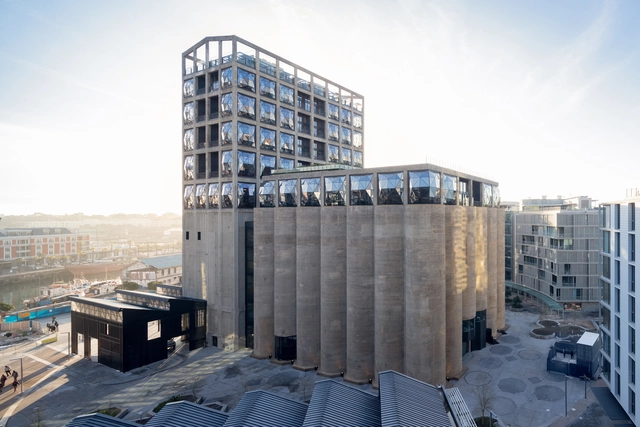Large-scale industrial projects—such as manufacturing facilities, distribution centers, and logistics hubs—require far more than standard architectural design. These complex structures demand a delicate balance of functionality, safety, efficiency, and scalability. Every detail, from the flow of operations to structural integrity and energy performance, plays a crucial role in the overall success of the project. That’s why industrial architects are indispensable.
Their expertise extends beyond creating blueprints; they design environments that enhance productivity, streamline logistics, and meet rigorous safety and compliance standards. In a city as dynamic and industrially advanced as Montreal, the role of specialized architects becomes even more critical. Let’s explore why these professionals are essential and how their work transforms ambitious industrial concepts into high-performing realities.
1. Deep Understanding of Industrial Operations
Industrial architecture differs greatly from commercial or residential design. These facilities must accommodate heavy machinery, complex workflows, and safety regulations while maintaining cost-efficiency.
Industrial architects begin every project by analyzing operational processes — understanding how people, equipment, and materials move through a space. This allows them to design layouts that maximize efficiency, minimize bottlenecks, and ensure seamless coordination between different departments or production lines.
In essence, the architecture supports productivity as much as it defines structure.
2. Balancing Functionality with Aesthetic Value
While function always takes priority in industrial design, aesthetics still matter. A well-designed industrial facility not only performs efficiently but also reflects the company’s values and professionalism.
Architects integrate modern materials, lighting, and clean layouts to create spaces that are both functional and visually appealing. This approach improves worker morale, enhances brand image, and makes maintenance simpler and more cost-effective over time.
3. Compliance with Building Codes and Safety Standards
Safety is a non-negotiable component of industrial construction. Facilities handling heavy machinery, hazardous materials, or large-scale logistics operations must meet strict national and provincial codes.
Industrial architects stay up to date with these evolving regulations, including fire protection, ventilation, emergency access, and sustainability standards. Their expertise ensures that every aspect of the design complies with legal requirements, preventing costly delays and ensuring long-term safety and reliability.
4. Space Optimization and Workflow Efficiency
Industrial buildings often cover vast areas, but efficient use of that space determines operational success. Architects analyze workflow patterns to create optimized floor plans that align with production, storage, and transportation needs.
- For manufacturing plants: Layouts are designed to minimize movement between workstations.
- For distribution centers: Aisles and loading docks are placed for rapid inventory turnover.
- For logistics hubs: Storage and circulation zones are organized for easy scalability.
This level of precision directly translates into faster operations, lower costs, and higher output.
5. Integration of Advanced Technology
Modern industrial facilities rely on automation, robotics, and digital monitoring systems. Industrial architects collaborate closely with engineers and technology specialists to integrate these systems seamlessly into the design.
This includes:
- Planning data centers and control rooms.
- Designing smart layouts for automated equipment.
- Incorporating energy-efficient lighting and HVAC systems.
By anticipating future technological needs, architects ensure that the facility remains adaptable and efficient for years to come.
6. Sustainability and Energy Efficiency
Sustainability has become a major focus in modern industrial design. Energy-efficient buildings reduce operational costs and environmental impact — a win-win for both businesses and the planet.
Industrial architects achieve this through:
- Natural lighting and ventilation design.
- Insulation and temperature regulation for large spaces.
- Solar energy integration and water recycling systems.
These green practices not only help companies meet environmental goals but also improve long-term performance and reduce maintenance expenses.
7. Managing Large-Scale Coordination
Industrial projects often involve dozens of contractors, engineers, and specialists. Without clear coordination, schedules can easily derail.
Architects act as project coordinators, ensuring that every stakeholder aligns with the overall vision and technical requirements. They manage communication between construction teams, suppliers, and clients, keeping the project organized, on time, and within budget.
8. Adapting to Local Environments
Designing industrial facilities in Montreal comes with specific challenges — from harsh winters to energy efficiency regulations and local zoning laws. Experienced professionals familiar with the region understand these nuances and design accordingly.
This ensures that the facility performs optimally year-round while meeting all local standards. It also simplifies the permitting and approval process, saving valuable time and resources.
9. Flexibility and Scalability for the Future
Industries evolve rapidly. Whether it’s expanding production lines, adopting new technologies, or shifting market demands, buildings must be flexible enough to adapt.
Industrial architects design with scalability in mind — creating modular spaces that can be easily expanded or reconfigured. This foresight allows companies to grow without requiring costly renovations or disruptions to operations.
10. Collaboration Between Design and Engineering
Large industrial projects thrive on collaboration. Architects work closely with structural, electrical, and mechanical engineers to ensure that the design aligns perfectly with performance requirements.
This integrated approach reduces errors, improves efficiency, and guarantees that every system — from ventilation to power distribution — functions cohesively within the architectural framework.
11. Ensuring Worker Comfort and Safety
Beyond machines and infrastructure, industrial spaces must prioritize the well-being of their workers. Architects design ergonomic work areas, efficient lighting systems, and safe access routes to minimize fatigue and prevent injuries.
They also plan break rooms, rest areas, and administrative spaces that contribute to a positive workplace environment — an often-overlooked factor that directly impacts productivity and employee satisfaction.
12. Budget Control and Value Engineering
Keeping large-scale projects within budget is always challenging. Architects apply value engineering principles — finding innovative ways to achieve the same quality and functionality at lower costs.
Through material selection, structural optimization, and energy-efficient solutions, they help clients save without compromising durability or performance.
13. Expertise in Industrial Project Types
Industrial architects handle a wide range of projects, including:
- Manufacturing and assembly plants
- Warehouses and logistics centers
- Food processing and cold storage facilities
- Pharmaceutical and cleanroom environments
- Energy and utility structures
Each project type requires specialized knowledge of industry-specific standards and equipment, making the architect’s expertise invaluable from the first concept sketch to the final handover.
14. The Role of Local Expertise in Montreal
Midway through the process, it becomes clear that industrial architecture demands both technical mastery and local insight. That’s exactly what distinguishes industrial architects in Montreal Stendel + Reich, who have earned a reputation for delivering large-scale, high-performance industrial spaces tailored to client needs.
Their designs blend efficiency, innovation, and sustainability — combining cutting-edge industrial planning with deep knowledge of local codes and environmental conditions. Whether developing logistics hubs, manufacturing facilities, or food production centers, their multidisciplinary team ensures precision and long-term functionality in every project.
15. Long-Term Partnership and Maintenance Support
A great industrial architect doesn’t disappear after construction is complete. Many firms continue to assist with maintenance planning, facility upgrades, and expansion projects. This long-term relationship ensures that the building continues to perform at its best as technologies evolve and operational needs change.
Final Thoughts
Industrial projects are complex ecosystems — where engineering, technology, and design must work in perfect harmony. Professional architects bring that harmony to life. They combine creative problem-solving with technical expertise to create spaces that function flawlessly and stand the test of time.















